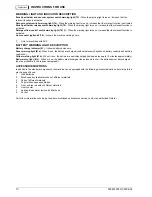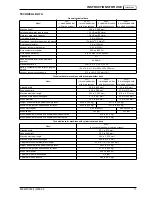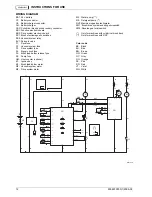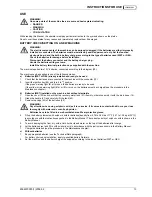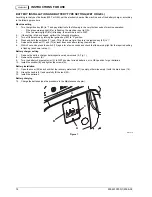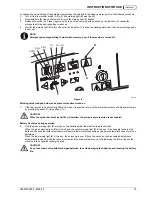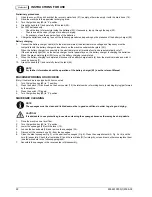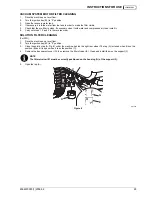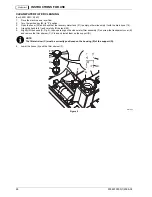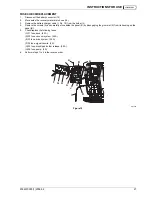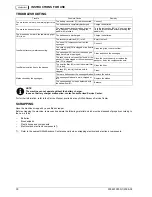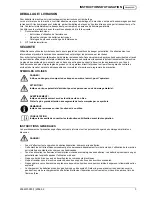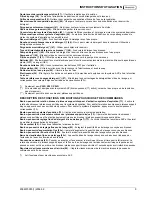
INSTRUCTIONS FOR USE
24
9096910000(1)2006-09
BRUSH/PAD CLEANING
1.
Remove the brushes/pads from the machine, as shown in the Use chapter.
2.
Clean and wash the brushes/pads with water and detergent.
3.
Check that the brushes/pads are integral and not excessively worn; otherwise replace them.
4.
On the machines equipped with the cylindrical brush deck, remove the debris container (D, Fig. 3) by pulling it on one side
with the handle (E).
Empty and wash the debris container (D), and then install it by engaging it on the retainers.
TANK AND VACUUM GRID WITH FLOAT CLEANING, AND COVER GASKET CHECK
1.
Drive the machine to the appointed disposal area.
2.
Turn the ignition key (80) to “0” position.
3.
Open the cover (A, Fig. 7) to washing position (L).
4.
Wash with clean water the cover (A), the tanks (B and C) and the vacuum grid with automatic shut-off float (D).
Drain the water from the tanks with the hoses (16 and 17).
5.
If necessary, release the retainers (E) and open the grid (D), recover the float (F), clean all the components and then
reinstall them.
6.
Check the tank cover gasket (G) for integrity.
If necessary replace the gasket (G) by removing it from its housing (H). When assembling the new gasket, install the joint
(I) in the rear central area, as shown in the figure.
7.
Check that the bearing surface (J) of the gasket (G) is integral and adequate for the gasket itself.
8.
Check the compensation hole (K) for clogging, and clean it if necessary.
9.
Close the cover (A).
S311321
Figure 7
CAUTION!
It is advisable to use protective gloves when cleaning the brushes/pads/cylindrical brushes because there
can be sharp debris.
NOTE
The gasket (G) creates vacuum in the tank that is necessary for vacuuming the recovery water.
NOTE
The hole (K), allowing to compensate the air in the cover interspaces, contributes to create vacuum in the
tank.
H
D
E
E
F
G
I
L
K
G
A
B
C
J

